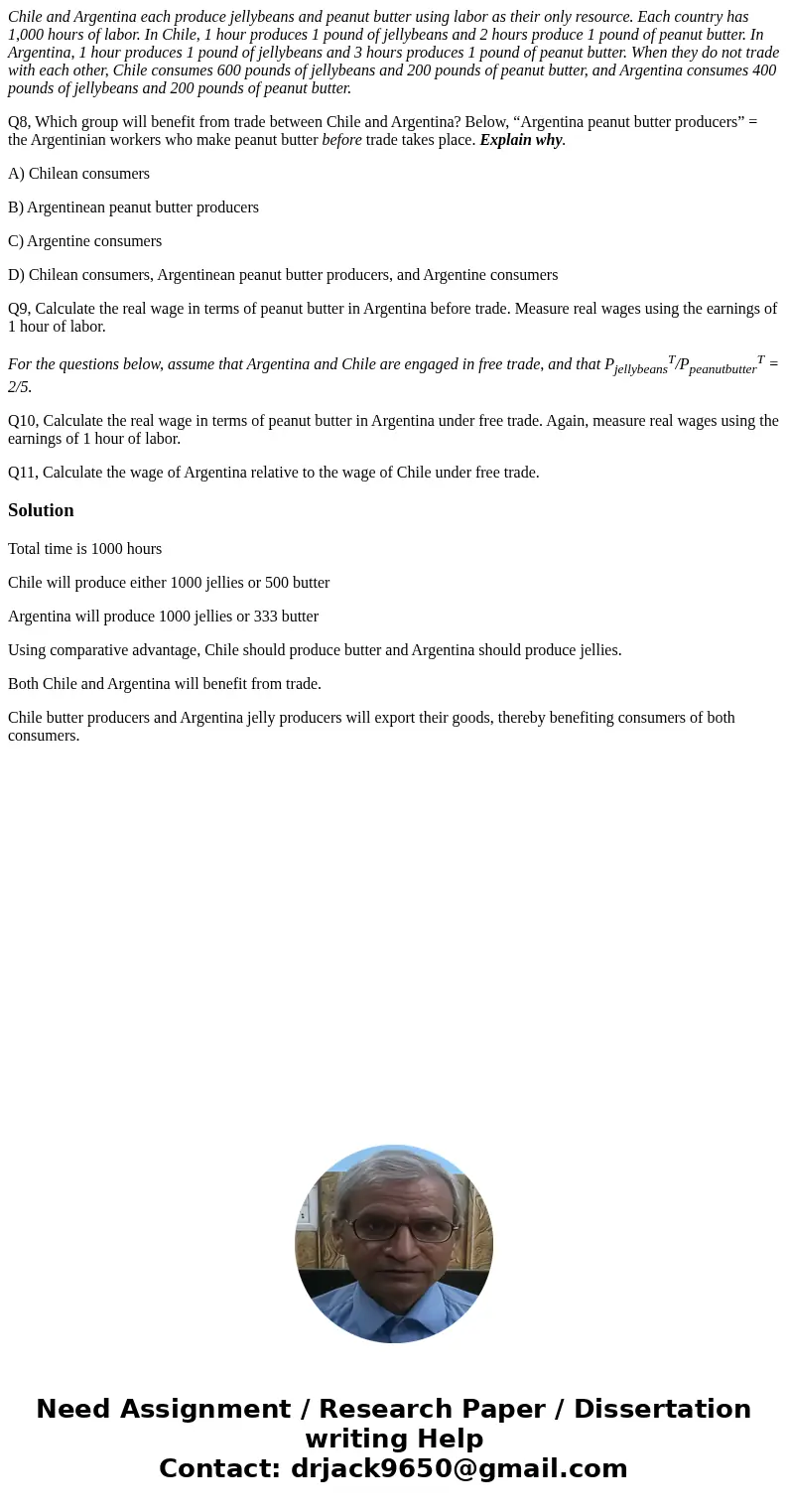Chile and Argentina each produce jellybeans and peanut butte
Chile and Argentina each produce jellybeans and peanut butter using labor as their only resource. Each country has 1,000 hours of labor. In Chile, 1 hour produces 1 pound of jellybeans and 2 hours produce 1 pound of peanut butter. In Argentina, 1 hour produces 1 pound of jellybeans and 3 hours produces 1 pound of peanut butter. When they do not trade with each other, Chile consumes 600 pounds of jellybeans and 200 pounds of peanut butter, and Argentina consumes 400 pounds of jellybeans and 200 pounds of peanut butter.
Q8, Which group will benefit from trade between Chile and Argentina? Below, “Argentina peanut butter producers” = the Argentinian workers who make peanut butter before trade takes place. Explain why.
A) Chilean consumers
B) Argentinean peanut butter producers
C) Argentine consumers
D) Chilean consumers, Argentinean peanut butter producers, and Argentine consumers
Q9, Calculate the real wage in terms of peanut butter in Argentina before trade. Measure real wages using the earnings of 1 hour of labor.
For the questions below, assume that Argentina and Chile are engaged in free trade, and that PjellybeansT/PpeanutbutterT = 2/5.
Q10, Calculate the real wage in terms of peanut butter in Argentina under free trade. Again, measure real wages using the earnings of 1 hour of labor.
Q11, Calculate the wage of Argentina relative to the wage of Chile under free trade.
Solution
Total time is 1000 hours
Chile will produce either 1000 jellies or 500 butter
Argentina will produce 1000 jellies or 333 butter
Using comparative advantage, Chile should produce butter and Argentina should produce jellies.
Both Chile and Argentina will benefit from trade.
Chile butter producers and Argentina jelly producers will export their goods, thereby benefiting consumers of both consumers.

 Homework Sourse
Homework Sourse